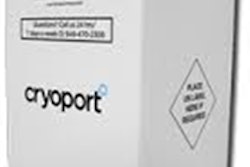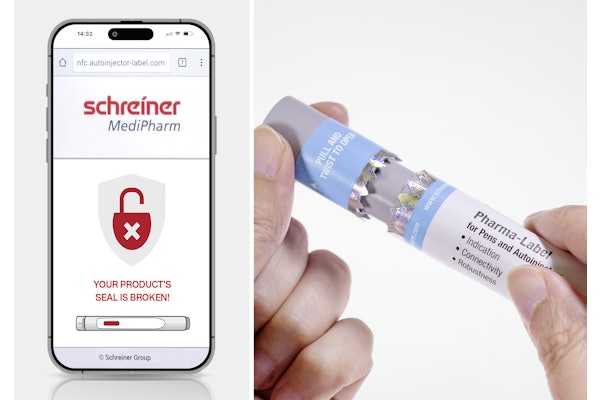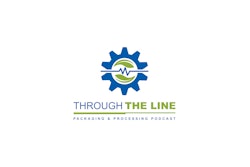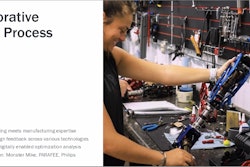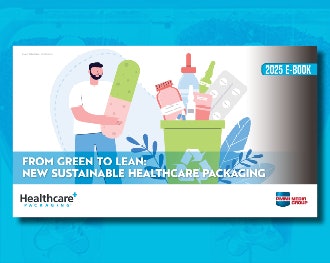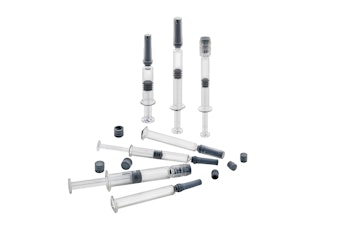Healthcare Packaging: GS1 US serves U.S. businesses, but are there also related GS1 organizations that serve other areas globally?
Greg Bylo: Yes, there are 111 other member organizations of GS1 around the world. GS1 US is the U.S.-based office, but there are others like GS1 UK, GS1 France, GS1 Tanzania, for example. Each organization is independent of the other but works to implement the same global GS1 Standards wherever they are.
Healthcare Packaging: Describe GS1 US, its standards and how they apply in the U.S. and globally?
Bylo: GS1 Standards are the most widely used supply chain standards in the world. The U.P.C. barcode—just one example of a GS1 Standard—is scanned more than five billion times a day globally. Our information standards provide for accurate identification and communication of information regarding products, assets, services and locations globally in order to drive supply chain visibility and efficiency. They help companies authenticate products, and allow them to trace products throughout each stop in the supply chain all over the world.
To provide an example of a standard in action, companies apply a barcode that contains a Global Trade Item Number (GTIN), which uniquely identifies that product. Once products have been identified with GTINs and a corresponding barcode for global uniqueness, electronic data exchange can be achieved. With the exchange of standardized product information, business processes are more automated, eliminating manual entry to reduce errors and save time. Business transactions become seamless, especially with the ability to link internal systems to an external system all trading partners can utilize. Standards provide this critical bridge and enable enhanced efficiency and collaboration.
You can imagine how powerful standards can be when recalled items need to be isolated and pulled from shelves, especially when consumer and patient safety is at risk. GS1 has been selected as one of the official issuing agencies supporting the FDA UDI [Unique Device Identification, for identification of medical devices through distribution and use] rule. Utilizing the UDI system of standards, in this case, allows a company to meet the UDI rule. GS1 US is also working on solutions to support the Drug Supply Chain Security Act (DSCSA) for the pharmaceutical industry.
Healthcare Packaging: Do companies pay a fee to belong to GS1 US? What are the benefits for these companies?
Bylo: Yes, GS1 US is a membership-based organization. The membership fees vary and depend on how many barcodes a company anticipates it will need. A company licenses a GS1 Company Prefix, which is the first few numbers contained in Global Trade Item Numbers (GTINs), which are the numbers that appear in barcodes. Once a company has a Company Prefix, they can create their own GTINs according to how many products and product variations they have. A breakdown of fees by capacity is available on our website.
A company can also join a GS1 US initiative, which also provides vital education and support to connect communities on supply chain and data issues as a whole. GS1 Healthcare US Initiative is particularly for healthcare that is driving forward open, global standards to help companies improve the accuracy, speed, and efficiency of the supply chain and care delivery. Workgroups are created to focus on current priorities of the industry.
Healthcare Packaging: Describe the importance of standards to global businesses?
Bylo: Companies started the Enterprise Resource Planning (ERP) effort many years ago and began to realize the importance of maintaining master data so that their global systems would run effectively. As these efforts stabilized they started to see how they could connect these systems with their trading partners and began to realize that the master data definitions they selected needed to be aligned with their trading partners in order to get the most benefit from their investment. GS1 standards are the standard definition to many ERP attributes such as how a product is described, the GTIN, following a standard process to establish the transferable product hierarchy approach. Using the Global Location Number (GLN) to identify trading partners ensures a consistent global approach. This is the power of the GS1 standards. They assist in realizing the ROI for an ERP system.
This standardization of master data becomes the fuel for a company’s supply chain. They reduce complexity between and within organizations. They make it easier for trading partners to identify items, share information about a product, order and receive parts or ingredients from suppliers, or ship goods to customers. This leads to improved patient safety and reduced medication errors by facilitating bedside verification and point-of-care scanning. They enable product traceability and authentication. By eliminating multiple coding systems, they make trading more efficient and responsive to customers.
Many companies understand how standards can benefit their business, but might run into challenges with specifically how to implement them. The GS1 US Advisory Services Program provides customized technical and business expertise to help companies with their standards implementation programs. Launched early last year, the program has been expanded in response to industry needs, including basic standards implementation, supporting their UDI program, or improving their supply chain processes through improved inventory visibility. Our customized plans help companies take a more holistic and accelerated approach to standards integration.
Healthcare Packaging: Describe the importance of standards for packaging professionals? How do GS1 standards have an impact on coding, labeling and regulatory matters related to packaging operations? Are there other areas within the packaging process that are affected by GS1 standards, such as filling, case packing, materials selection, etc.?
Bylo: Packaging professionals need to be aware of how products are identified and what the requirements are for the placement of barcodes and GTINs. GS1 Standards professionals worked with industry to create the GTIN Allocation Rules, which are guidelines for how barcodes and GTINs are used in packaging. This helps packaging professionals determine what types of packages need new GTINs, proper placement of barcodes, and other considerations. For example, if a manufacturer changes the dimensions or gross weight of a bag of throat lozenges, the professional needs to know if their application of GS1 Standards will also have to change.
Healthcare Packaging: GS1 US consists primarily of companies trying to meet serialization, track and trace and authentication issues. Is that an accurate perception? Why or why not?
Bylo: It is true that regulatory compliance—whether it is UDI or DSCSA—is one of the main reasons why healthcare companies turn to GS1 US and also may seek out the assistance of the GS1 US Advisory Services program. We provide specialized consultations and programs specifically designed for common supply chain challenges. But many companies find the benefits of GS1 Standards implementation extend well beyond compliance—it enables a company to do business globally, it reduces redundancies in supply chain processes, it can play a crucial role in overall risk management or crisis preparedness—by providing a foundation for their master data management.
Companies are viewing their supply chains as a differentiator with their competitors. By integrating GS1 Standards into the supply chain, organizations can become more data-driven and leverage information technology more effectively. Having a standard definition for a product throughout the end-to-end supply chain improves inventory visibility. If lot or batch or expiry information is tagged onto that product, then an improved expiry management program can be enabled. By including this product information on an electronic health record (EHR), we now have visibility to support recalls. This EHR information can lead to improving the patient charge or reimbursement process, enhance equipment and instrument tracking, and help an organization support outcome-based medicine and comparative effectiveness.
Healthcare Packaging: GS1 standards would seem to have significant impact on the entire supply chain process, correct? What does the supply chain include from GS1 US’s perspective: Is the supply chain identified as from the manufacturing site through warehousing, distribution, storage at the usage site? To a customer or patient?
Bylo: Yes, GS1 Standards implementation is what makes supply chain visibility possible. In healthcare, the supply chain would include manufacturers (pharmaceutical, medical device, or other), distributors, group purchasing organizations (GPO), providers/hospitals, pharmacies, and broader retailers. Their goals are to improve patient safety, including making sure the right patient gets the right medication or medical device, at the right time and through the right route—and standards make sure that product is authentic, too.
Healthcare Packaging: How does GS1 US define logistics within the supply chain and how GS1 standards come into play within logistics functions?
Bylo: Over the years, GS1 US has provided standardized guidance documents to aid the logistics industry with adopting common processes to improve the performance of the supply chain. This would include business processes and forms (such as a Bill of Lading, for example) that enhance efficiency from the source to the end consumer across all methods of transport, including motor, rail, ocean, and air—for both domestic and global use cases. Logistics partners rely on standards to communicate in a uniform way with their supply chain partners, just as any other company in the supply chain would.
One key example is the Serial Shipping Container Code (SSCC) GS1 standard. The SSCC can be used by companies to identify a logistic unit, which can be any combination of trade items packaged together for storage and/or transport purposes; for example a case, pallet or parcel.
Healthcare Packaging: What are the differences in how a pharmaceutical manufacturer might employ GS1 standards to its packaging vs a food producer vs a medical device maker, etc. What are the important differences?
Bylo: GS1 Standards are very versatile, which means many different industries can apply the same standards to various business needs. GS1 US serves 25 industries in the U.S.—at the heart of every single standards implementation are the basic principles of “identify, capture, and share.”
Generally, whether it is a CPG manufacturer that identifies their box of macaroni and cheese with a GTIN and traces it on its journey to the supermarket, or a pharmaceutical company that identifies a bottle of cough syrup with a GTIN and traces its journey to the pharmacy shelf, the standards are open and voluntary for anyone who wishes to apply them to their business processes.
There are differences in which standards are used, and some standards are more preferred among different industries. For example, item-level radio frequency identification (RFID) is a popular standard data carrier in the apparel industry, as it allows for faster and more accurate inventory management, as opposed to individual barcode scans that can take much longer. Also, the GS1 Standard called the Electronic Product Code Information Service (EPCIS) is supported by the FDA as an efficient communication method for reporting transactional information to help companies meet DSCSA requirements.
The goal of the GS1 US Advisory Services Program is to take the standards knowledge our team has amassed over the years, and apply it to a company’s unique challenge. The company may not know just how a standard should be applied in a given situation because of the depth of its capabilities. If there is a challenge, the team will come up with the right combination of standards applications to help solve for it.






